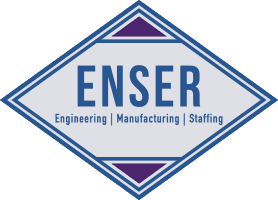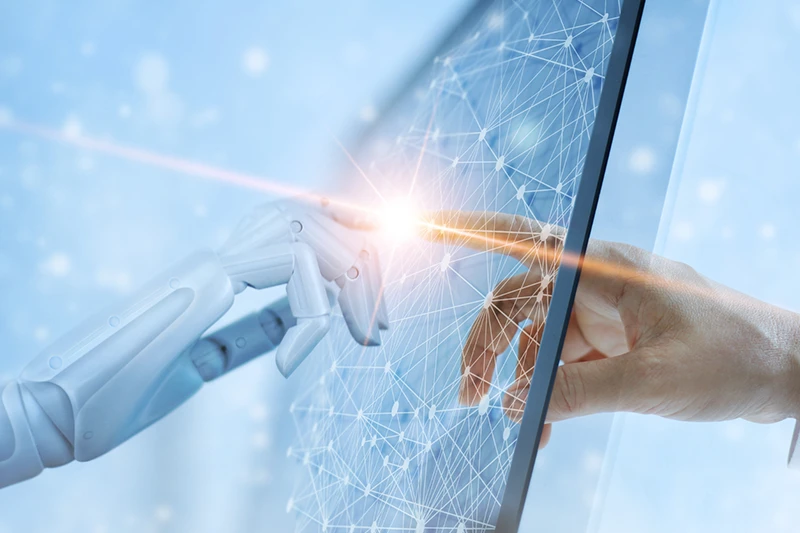
Navigating the Challenges of Contract Manufacturing for Custom Projects
March 17, 2025
Reshoring Manufacturing to the US Amid Tariff Uncertainty
May 5, 2025Artificial intelligence (AI) is rapidly reshaping various industries, and recruiting is at the forefront of this transformation. As organizations adopt AI technologies, the landscape of talent acquisition is evolving, with significant implications for the job market. This article explores how AI is being used in recruiting, its impact on traditional job roles, and how recruiters can leverage AI to enhance their hiring processes.
Personal Journey in Recruitment
I’ve had the opportunity to be a Technical Recruiter for more than 25 years, witnessing the evolution of technologies from IBM 370 Mainframes, Digital Equipment Corporation’s (DEC) (16-bit) PDP-11 or VAX-11 computers to modern-day high-powered computers and Internet of Things (IoT) devices. It’s been an incredible evolution to witness firsthand. I worked as a Network Engineer at an ISP (Internet Service Provider) in San Diego my intention was to stay in the IT field. My manager asked me to help him hire some Engineers and Web Developers. He told me I understood the technology and had the ability to connect with people effectively over the phone. From that day on in 1998, I’ve been recruiting in the technology industry. I never envisioned I would become a Technical Recruiter, but I’m glad I did.
I will always remember an Engineer telling me, “Eric, I see the users' eyes in every line of code.” There’s a simple beauty to that approach in Engineering. Like all technologies, AI is there for us to use and benefit from; at ENSER, we’re incorporating AI into everything we do.
1. AI's Influence on Job Market Dynamics
The integration of AI into the workplace is not just changing how companies recruit talent; it is also altering the job market as a whole. Many roles that were once considered mainstream, such as Technical Writers, are becoming obsolete as AI tools increasingly take over tasks like documentation and content generation. This shift raises questions about the future of work and the types of skills that will be in demand.
While AI can enhance productivity, it also poses challenges for workers in roles susceptible to automation. As certain jobs decline, there will be a growing need for reskilling and upskilling initiatives to prepare the workforce for emerging roles that require more complex, creative, and interpersonal skills. Organizations must invest in training programs to help employees transition into new roles that AI cannot easily replace.
2. Resume Screening and Shortlisting with AI
One of the most time-consuming tasks in recruiting is reviewing resumes. AI-powered tools can automate this process by scanning resumes for specific keywords, qualifications, and experiences that match job descriptions. This not only speeds up the initial screening process but also helps eliminate human bias by focusing solely on candidate qualifications.
While AI enhances efficiency, there is a risk of over-reliance on algorithms that may inadvertently filter out qualified candidates who do not use the exact keywords. Recruiters should balance AI's capabilities with human judgment to ensure a fair evaluation process. This is one of the key reasons recruiters remain essential. There’s no substitute for building human rapport with candidates—personal interaction remains a critical part of the hiring process.
3. Creating Boolean Strings for Candidate Search
Recruiters can leverage AI to create sophisticated Boolean strings that enhance candidate searches. By combining keywords with operators like AND, OR, and NOT, recruiters can refine their searches to identify candidates who meet specific criteria. This capability allows for more targeted searches, ensuring that recruiters find the best potential candidates efficiently.
Recently, I have effectively used AI in my recruitment process to identify relevant companies. When I have a job, I’m recruiting for, I need to know where the candidates who can fill this position work or where they used to work. AI helps me easily find a list of related companies to draw concentric circles. This is done with tools like CoPilot (Microsoft) or Gemini (Google). Within LinkedIn, I can easily integrate AI-based searches into projects and save my results. From there, I build custom Boolean strings based on those companies and the required skillsets. I’ve even been able to code in Python using AI, accomplishing tasks that were once time-consuming quickly.
4. Chatbots for Candidate Engagement
AI-driven chatbots are increasingly being used to engage with candidates throughout the recruitment process. These chatbots can answer frequently asked questions, provide updates on application status, and even conduct initial screening interviews. This 24/7 availability enhances the candidate’s experience and allows recruiters to focus on higher-level tasks.
Chatbots can significantly improve candidate engagement, but they should not replace human interaction entirely. Candidates often appreciate personal communication, especially during critical stages of the hiring process. Striking a balance between automation and personal touch is crucial.
5. Skill Testing and Assessment
AI can facilitate skill testing and assessments, allowing recruiters to evaluate candidates' abilities more effectively. Automated testing platforms can measure technical skills, problem-solving capabilities, and even soft skills through simulations and interactive assessments. This data-driven approach provides recruiters with valuable insights into candidates' competencies.
Skill testing through AI can enhance the quality of hires by ensuring that candidates possess the necessary skills for the role. However, it is essential to design assessments that accurately reflect real-world scenarios. For example, AI can support sample code reviews or facilitate live coding tests during technical interviews. Recruiters and hiring managers should also consider candidates' potential for growth and adaptability, not just their current skill set.
6. Bias Mitigation Tools
AI can also play a role in identifying and mitigating bias in the recruitment process. By analyzing language in job descriptions and candidate communications, AI tools can highlight potentially biased language or practices, allowing organizations to make necessary adjustments.
Using AI to address bias is a positive development, but organizations must remain vigilant. AI systems can perpetuate existing biases if not carefully monitored and adjusted. Continuous training and awareness are essential to ensure these tools contribute to a more equitable hiring process.
Conclusion
The integration of AI in recruiting is revolutionizing talent acquisition, offering significant benefits in efficiency, engagement, and predictive insights. However, it is crucial for organizations to approach these technologies thoughtfully. Balancing automation with human judgment, ensuring diversity and inclusion, and continuously monitoring AI systems will be essential to harnessing the full potential of AI in recruiting while mitigating its risks.
As we move forward, the role of AI in recruiting will likely continue to evolve, shaping the future of how organizations connect with talent. Embracing these advancements while remaining committed to ethical practices will be key to successful talent acquisition in the digital age. Ultimately, the future of work will require a blend of AI capabilities and human creativity, adaptability, and empathy.
Founded in 1947 in Philadelphia, PA, ENSER Corporation started as a tool design company designing fixtures, gauges, dies, and special machinery. Over time, we expanded into product design, FEA (Finite Element Analysis), Design and Engineering for multiple disciplines such as Electro-mechanical, Electrical and Embedded systems engineering, and prototyping. We have worked with some of the most successful companies in the world, including Siemens Energy, General Electric and Lockheed Martin. To better serve our clients, we opened offices in Charlotte, NC (1982), and Orlando, FL (1991). Currently, we have three divisions: Engineering, Manufacturing, and Staffing. Successful companies know that outsourcing deployments require finding the right partner. ENSER Corporation's extensive experience as a leading engineering services and staffing company uniquely positions us to provide the best and most cost-effective solution.
Frequently Asked Questions About Engineering Staffing
Embrace the Future of Engineering Recruitment with AI and ENSER
Harness the power of artificial intelligence to attract top engineering talent faster and more efficiently. Whether you're filling a critical niche role or scaling your team, our AI-enhanced recruiting strategies can help you stay ahead in today’s competitive market.
Let’s build your future workforce—smarter.






